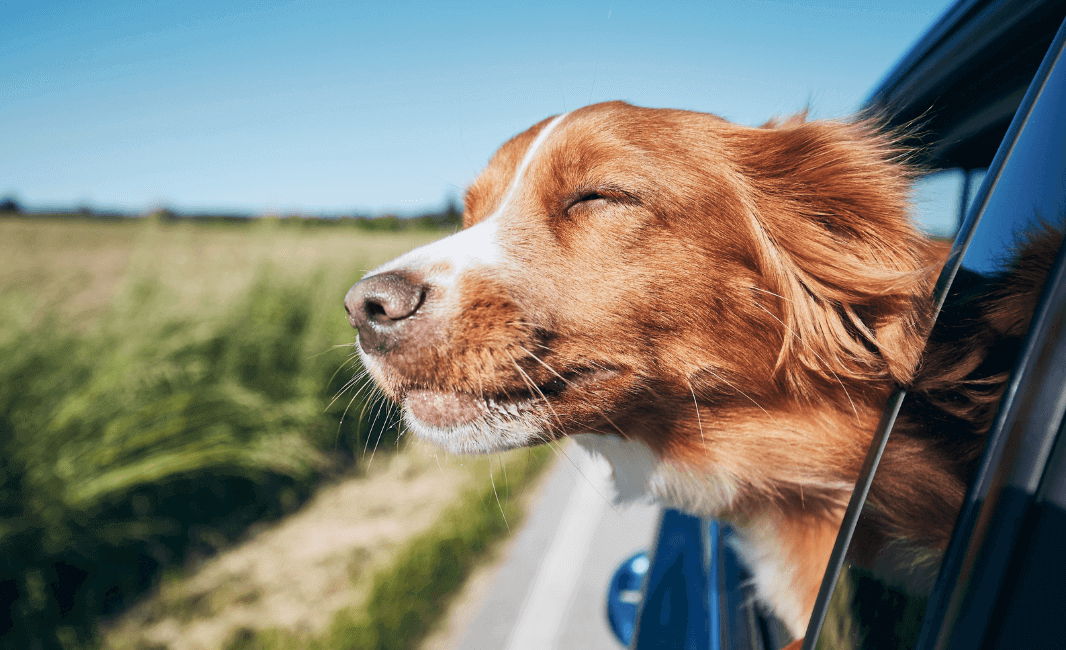Dogs pant for various reasons, and while it is a natural behavior, it can be concerning when it occurs in specific situations, such as during car rides. Understanding why dogs pant in the car can help owners address the issue and ensure their pets’ comfort and safety.
This article will explore the causes of panting in dogs during car rides, the signs that indicate when panting is a problem, and practical solutions to help reduce this behavior.
Causes of Panting in Dogs During Car Rides
Anxiety and Stress
New Experiences: For many dogs, car rides are not a regular occurrence, and the unfamiliarity can cause anxiety. Dogs thrive on routine, and a break from their usual environment can be stressful.
Motion Sickness: Some dogs experience motion sickness just like humans. The sensation of movement and the changing scenery outside can lead to nausea, which often results in panting.
Previous Negative Experiences: Dogs have excellent memories, and if a dog has had a bad experience in a car (such as a trip to the vet or a stressful move), they may associate car rides with negative outcomes, leading to stress-induced panting.
Heat and Overheating
Temperature Regulation: Dogs do not sweat like humans. They regulate their body temperature primarily through panting. Cars can heat up quickly, especially in the sun, making it difficult for dogs to cool down.
Enclosed Space: Even with air conditioning, the confined space of a car can make it harder for dogs to dissipate heat effectively.
Excitement and Anticipation
Positive Excitement: Not all panting is due to negative feelings. Some dogs pant out of excitement. If car rides typically lead to enjoyable destinations like parks or beaches, the anticipation can cause an increase in panting.
Physical Discomfort
Lack of Comfort: The physical setup of the car might not be ideal for all dogs. Uncomfortable seating, lack of proper support, or limited space can cause physical discomfort, leading to panting as a response to stress or pain.
Recognizing Problematic Panting
While some panting is normal, excessive or unusual panting can indicate a problem. Here are signs to watch for:
- Persistent Panting: Panting that continues for an extended period, even after the car ride has ended, may indicate underlying issues.
- Other Symptoms: Look for additional signs of distress such as drooling, vomiting, whining, or lethargy. These symptoms, alongside panting, can point to motion sickness or severe anxiety.
- Changes in Behavior: If a dog becomes overly agitated, refuses to enter the car, or exhibits other changes in behavior related to car rides, this could indicate a deeper issue.
Solutions to Reduce Panting in the Car
Gradual Acclimatization
Short Trips: Start with short, positive car rides to help your dog get used to the motion and environment. Gradually increase the length of the trips as your dog becomes more comfortable.
Positive Reinforcement: Use treats, praise, and toys to create a positive association with the car. Reward your dog for calm behavior before, during, and after the ride.
Comfort and Safety
Proper Restraints: Ensure your dog is properly restrained using a seatbelt harness or a secured crate. This not only keeps them safe but also provides a sense of security.
Comfortable Environment: Make the car environment as comfortable as possible. Use soft bedding, and ensure your dog has enough space to sit or lie down comfortably.
Temperature Control: Keep the car cool, use sunshades on windows, and ensure good ventilation. Never leave your dog unattended in a parked car, as temperatures can rise quickly.
Managing Anxiety
Desensitization Training: Gradually expose your dog to the car environment without going for a drive. Let them sit in the car with the engine off, then with the engine on, and eventually take short trips. This process helps them get used to the sounds and motions associated with car rides.
Calming Products: Consider using calming aids such as pheromone sprays, anxiety wraps, or natural supplements designed to reduce stress in dogs.
Professional Help: If anxiety is severe, consult a veterinarian or a professional dog trainer. They can provide tailored advice and, if necessary, recommend medications to help manage your dog’s anxiety.
Preventing Motion Sickness
Feeding Schedule: Avoid feeding your dog a large meal right before a car ride. Instead, offer a light snack and ensure they are well-hydrated.
Comfort Items: Bring along familiar items such as a favorite toy or blanket to provide comfort and distraction during the ride.
Veterinary Consultation: For dogs that consistently suffer from motion sickness, a veterinarian may prescribe medication to help alleviate symptoms.
Conclusion
Panting in the car can be a sign of various underlying issues ranging from anxiety to physical discomfort. By understanding the potential causes and recognizing the signs of problematic panting, dog owners can take proactive steps to ensure their pets’ comfort and well-being during car rides.
Gradual acclimatization, creating a comfortable environment, managing anxiety, and addressing motion sickness are all effective strategies to reduce panting and make car rides a more pleasant experience for both dogs and their owners. If challenges persist, consulting with a veterinarian or professional trainer can provide additional support and solutions tailored to your dog’s specific needs.

Leave a Reply